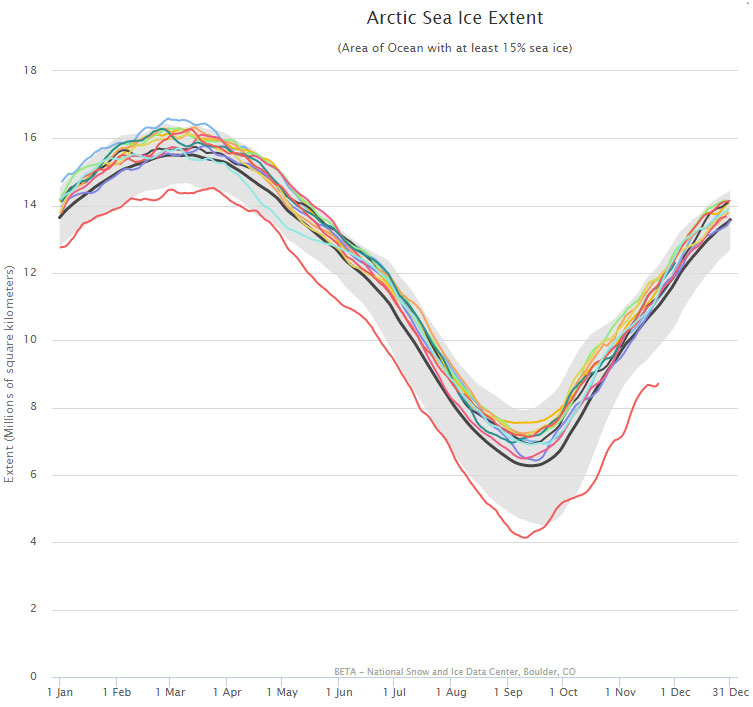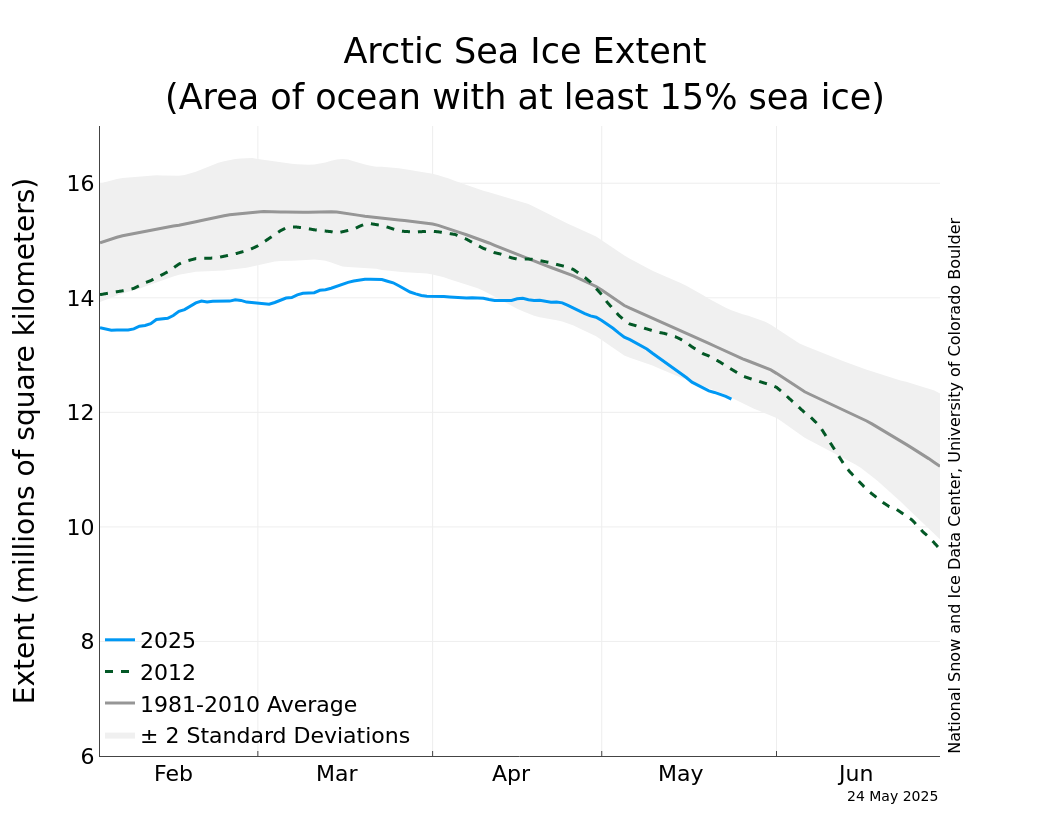Welcome to DU!
The truly grassroots left-of-center political community where regular people, not algorithms, drive the discussions and set the standards.
Join the community:
Create a free account
Support DU (and get rid of ads!):
Become a Star Member
Latest Breaking News
General Discussion
The DU Lounge
All Forums
Issue Forums
Culture Forums
Alliance Forums
Region Forums
Support Forums
Help & Search
Environment & Energy
Related: About this forumLow Sea Ice Shock And Awe Continues -Oh, And It's Not A "Broken Sensor"
 ?w=500&h=469
?w=500&h=469
I met TV Meteorologist Dan Satterfield in Austin this past June. He gets it. Dan’s Wild Wild Science Journal:
I’ve been busy with the GOES-R launch, but am also following the incredible situation in the High Arctic, where Arctic Sea ice continues to run at record low levels. More like falling of a cliff actually, and the only word I can come up with is astonishing! There is a real temperature dipole showing up between the warm Arctic and the very cold areas of Russia/Asia where the snowfall was quite extensive in October. Surface pressures have passed 1080 hectopascals (millibars) in this area (this indicates frigid and heavy air), and there is growing evidence of a connection to October snow there, and cold and snowy winters in Europe and the NE U.S. (See the winter forecast in a previous post).
The ice globally is also at record low levels, and if you’re wondering how this will impact the winter storm tracks, then I can tell you we meteorologists are wondering (and arguing) about it as well! There’s no way that it cannot, so what’s happening is VERY important. In addition, there’s no doubt that the warming planet is having a big impact in the Arctic, and if you think that climate change is a future problem, you need to change your mindset now.
The eye popping figures that have broken Twitter in recent weeks come most often from PhD Student Zack Labe, interviewed here:
Callan Bentley for AGU Blogosphere:
Is what’s happening now in the Arctic anomalous? What about the Antarctic? What’s going on?
The persistent atmospheric circulation from a deep low pressure anomaly over the North Pacific and a record ridge over Eurasia allowed warmer air to advect into the Arctic on both the Pacific and Atlantic sides. Warmer sea surface temperatures and more open ocean waters have also contributed to the slow expansion of sea ice this fall, particularly in the Barents and Kara Seas. As a result of this anomalous atmospheric pattern and the continued warming of the Arctic from climate change, temperatures were able to rise well above normal in addition to record low sea ice.
 ?w=480
?w=480
Can you address the suggestion made a few days back that “a broken sensor” was a possible explanation?
During the spring of 2016, the instrument on the DMSP-F17 satellite used for sea ice concentration data by the NSIDC began recording erroneous data. The NSIDC made the transition to the DMSP-F18 satellite passive microwave instrument and provided a consistent and continuous record of sea ice concentration. More information/validation between satellites can be found from the NSIDC at http://nsidc.org/the-drift/data-update/sea-ice-index-processing-resumed-with-dmsp-f18-satellite-data/
Therefore, the current data from both the Northern and Southern Hemisphere is not affected by any sensor issues. Additionally, there are other tools for sea ice data, including the AMSR2 instrument available from JAXA, which confirm the anomalously low sea ice in the Arctic and Antarctic.
EDIT
https://climatecrocks.com/2016/11/24/sea-ice-continues-to-shock-and-amaze/#comments
InfoView thread info, including edit history
TrashPut this thread in your Trash Can (My DU » Trash Can)
BookmarkAdd this thread to your Bookmarks (My DU » Bookmarks)
2 replies, 1170 views
ShareGet links to this post and/or share on social media
AlertAlert this post for a rule violation
PowersThere are no powers you can use on this post
EditCannot edit other people's posts
ReplyReply to this post
EditCannot edit other people's posts
Rec (5)
ReplyReply to this post
2 replies
 = new reply since forum marked as read
Highlight:
NoneDon't highlight anything
5 newestHighlight 5 most recent replies
= new reply since forum marked as read
Highlight:
NoneDon't highlight anything
5 newestHighlight 5 most recent replies
Low Sea Ice Shock And Awe Continues -Oh, And It's Not A "Broken Sensor" (Original Post)
hatrack
Nov 2016
OP
Achilleaze
(15,543 posts)1. k & r
OKIsItJustMe
(19,938 posts)2. That graph is a bit misleading
Here’s the corresponding graph from NSIDC (note the dashed 2012 line which is missing from the graph in the OP.)
https://nsidc.org/arcticseaicenews/

It’s still a disturbing graph, but…